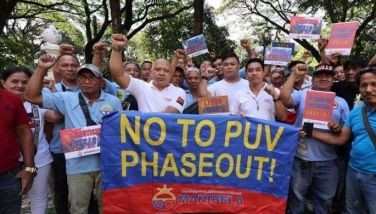Free internet use seen nationwide

MANILA, Philippines — Filipinos will soon be able to enjoy fast and free internet in public places after the Department of Information and Communications Technology (DICT), National Transmission Corp. (TransCo) and National Grid Corp. of the Philippines (NGCP) signed a tripartite agreement last week to utilize the unused portion of fiber optics, also referred to as black fiber, in the transmission grid.
The project, which was seven years in the making, allows the government to tap the unused fiber optic network for its National Broadband Plan (NBP) – the blueprint for building the “infostructure” for a digital nation and aimed at accelerating the deployment of fiber optic cables and wireless technologies as well as improve the overall internet speed and affordability in the country, especially in remote areas.
President Duterte, in his first State of the Nation Address (SONA), vowed to give fast internet speed at no charge in selected public places that include parks, plazas, public libraries, schools, government offices, hospitals, train stations, airports and seaports nationwide.
“This is a major milestone. We are very happy that this MOA (memorandum of agreement) was finally signed. This will also help hasten the processing of licenses, permits, clearances and other government issuances nationwide,” said TransCo president Melvin Matibag.
In a separate statement, NGCP said this is a welcome opportunity to take part in the government’s NBP to address the longstanding issue of internet connection quality in the Philippines.
NGCP president Anthony Almeda said the agreement would address the long-standing issue of slow internet connection in the country.
“We are eager to experience not only the improvement of internet speed but also free WiFi access in public areas,” he added.
The use of the grid’s fiber optic cable network will be the backbone of the NBP, allowing small telco players to connect and provide access across the country.
“The two big players, Globe and Smart, have their own international gateway facilities (IGFs), they have their own backbone. But we will do this for the small players. We have a number of small players, if given a chance to have connectivity in a backbone, we can have users connected to the internet at a low cost,” DICT acting Secretary Eliseo Rio explained earlier.
Currently, DICT is working with Japan International Cooperation Agency (JICA) for a feasibility study to determine the cost needed to utilize the fiber optic network in the NBP.
Since the fiber optic network is owned by government through TransCo, the Philippine government would only need to invest in equipment to use the optic cables, Rio said.
He added that the dark fiber or the unused portion of the fiber optic network is already in place and the government would just have to improve on it and put in the necessary equipment.
While studies are still ongoing, Rio revealed that the initial cost to the government is between P20 billion to P30 billion.
“The budget for that will have be to recommended to Congress under the General Appropriations Act (GAA)… Depending on how much Congress will give us, it could be in 2019, 2020, 2021, 2022,” he said, explaining that the estimate could be given on a phase-by-phase basis.
The NGCP, through a 25-year concession agreement, operates about 5,000 to 10,000 fiber optic cables of existing fiber optic facilities that run from Luzon to Mindanao for internal communication purposes.
The transmission grid’s existing fiber optic cable network enables real-time communication between transmission facilities, generators and distribution utilities. The fiber optic capacity uses transmission facilities, allowing government or third parties to piggy-back on this communication backbone.
TransCo and NGCP were at odds on the use of the fiber optic network since the state-run firm was not part of the previous agreement with DICT. TransCo said it should be part of any agreement on the use of the transmission grid’s fiber optic network since it is the government agency that protects these assets.
However, NGCP earlier said it could legally enter into a bilateral agreement with the government even without TransCo.
“I am happy that despite our differences, NGCP and TransCo, as the concessionaire and the owner of the transmission facilities, have partnered to deliver this gift to the Filipino people.
- Latest
- Trending





























